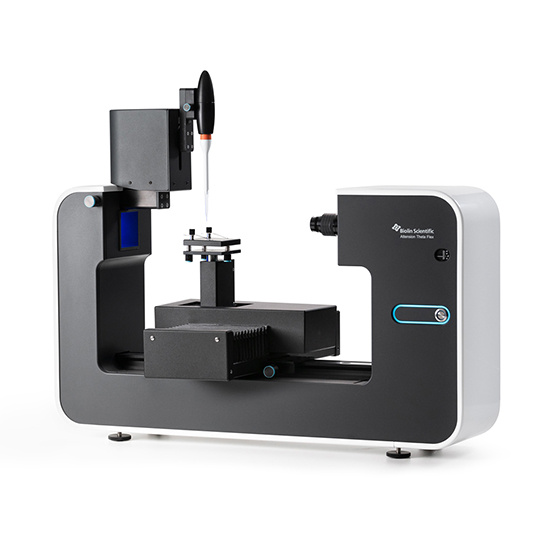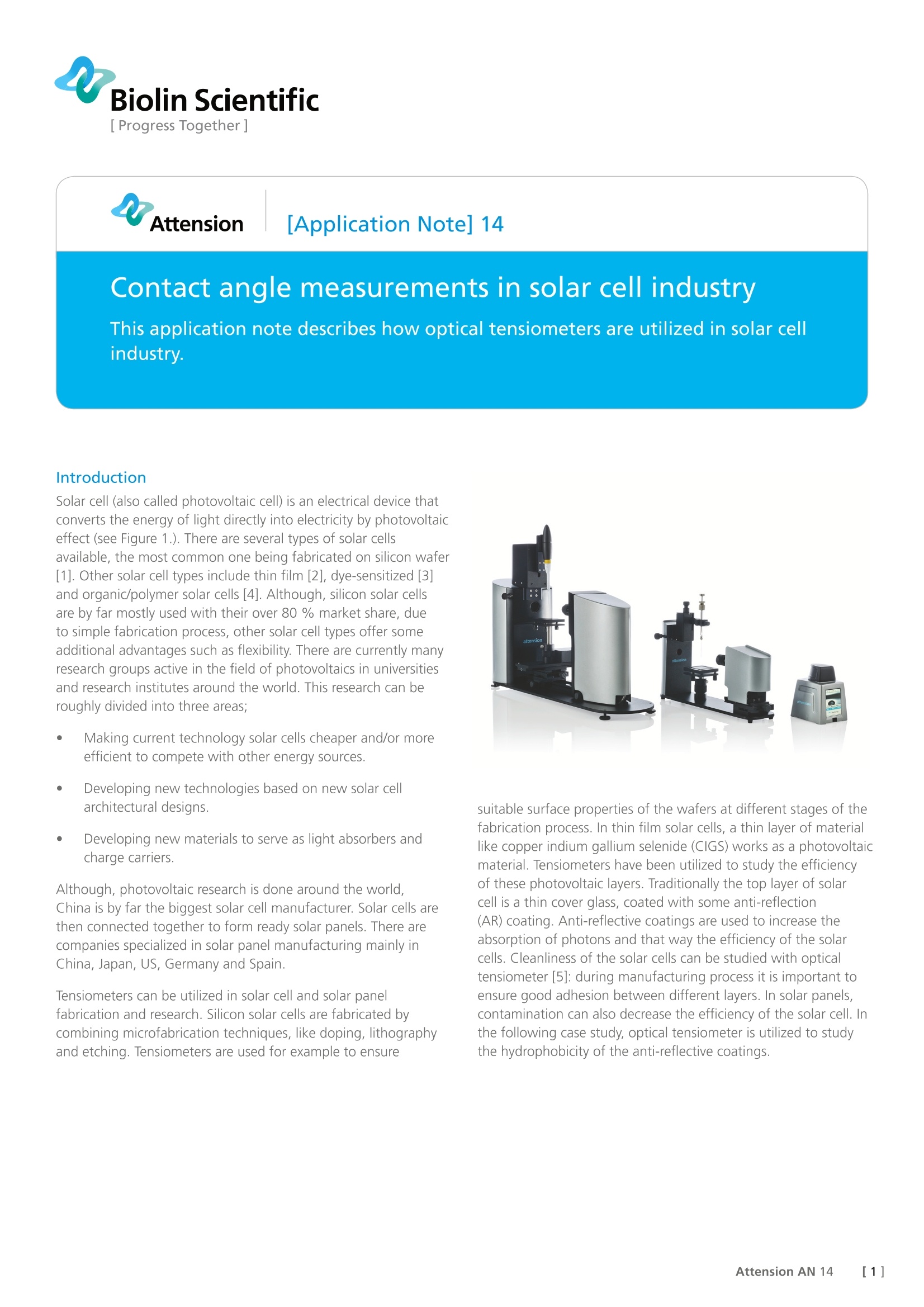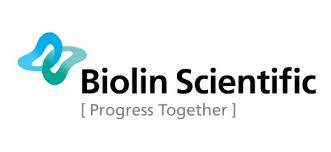
方案详情
文
太阳能电池(光伏电池)是一种能通过光电效应将光能量直接转化成电化学能量的电池。市场上有很多钟太阳能电池,现在最常见的太阳能电池是制备在硅表面。其他的一些太阳能电池包括薄膜电池,染料电池,有机高分子太阳能电池。本文中介绍了光学接触角测量仪如何使用在太阳能研发中。
方案详情

Biolin Scientific[ Progress Together ] [Application Note] 14 Contact angle measurements in solar cell industry This application note describes how optical tensiometers are utilized in solar cellindustry. Introduction Solar cell (also called photovoltaic cell) is an electrical device thatconverts the energy of light directly into electricity by photovoltaiceffect (see Figure 1.). There are several types of solar cellsavailable, the most common one being fabricated on silicon wafer[1]. Other solar cell types include thin film [2], dye-sensitized [3]and organic/polymer solar cells [4]. Although, silicon solar cellsare by far mostly used with their over 80 % market share, dueto simple fabrication process, other solar cell types offer someadditional advantages such as flexibility. There are currently manyresearch groups active in the field of photovoltaics in universitiesand research institutes around the world. This research can beroughly divided into three areas; Making current technology solar cells cheaper and/or moreefficient to compete with other energy sources. Developing new technologies based on new solar cellarchitectural designs. Developing new materials to serve as light absorbers andcharge carriers. Although, photovoltaic research is done around the world,China is by far the biggest solar cell manufacturer. Solar cells arethen connected together to form ready solar panels. There arecompanies specialized in solar panel manufacturing mainly inChina, Japan, US, Germany and Spain. Tensiometers can be utilized in solar cell and solar panelfabrication and research. Silicon solar cells are fabricated bycombining microfabrication techniques, like doping, lithographyand etching. Tensiometers are used for example to ensure suitable surface properties of the wafers at different stages of thefabrication process. In thin film solar cells, a thin layer of materiallike copper indium gallium selenide (CIGS) works as a photovoltaicmaterial. Tensiometers have been utilized to study the efficiencyof these photovoltaic layers. Traditionally the top layer of solarcell is a thin cover glass, coated with some anti-reflection(AR) coating. Anti-reflective coatings are used to increase theabsorption of photons and that way the efficiency of the solarcells. Cleanliness of the solar cells can be studied with opticaltensiometer [5]: during manufacturing process it is important toensure good adhesion between different layers. In solar panels,contamination can also decrease the efficiency of the solar cell. Inthe following case study, optical tensiometer is utilized to studythe hydrophobicity of the anti-reflective coatings. [Figure 1]: Working principle of silicon solar cell and solar panel. Solar cellworks by using energy from the sun (1) to excite electrons. The excitedelectrons jump from lower energy level (2) to a higher one (3) leaving behind ahole. Silicon solar cells use a semiconductor (p-type silicon) to pull an electronin one direction, and another material (n-type silicon) to pull the hole in theother direction. This flow of electrons and holes in different directions leads toan electric currect (4). Case study: Surface treatment for improvedhydrophobicity of antireflective coatings The sol-gel dip coating technology is a widely used methodfor producing AR layers on large areas. Porous structure of thefilm is needed to achieve a refractive index of the film to 1.23which is required for zero reflection on a glass surface. Thisis accomplished by adding a "porogen" material to the sol-gel solution and removing it during the heat treatment. Thisnanoporous silica film is usually rich in residual silanol groupsthat are very reactive and induce adsorption of water vapourand contaminants. This results into deterioration of the opticalproperties of the AR films and thus decreases the solar cellefficiency. San Vicente et al.[6] have investigated the use of hydrophobichexamethyldisiloxane (HMDS) coating to prevent thecontamination of the AR layer. Contact angle measurement(CAM 200, Attension, Biolin Scientific), was used to evaluate thehydrophobicity of the surface after different treatment conditions.Treatment with 100% HMDS solution for 15 min was found to bethe sufficient value for this application. Conclusion Solar cell research and development is an active field and theefficiency of the solar cells is constantly increasing. Contact anglemeasurements can be utilized in many stages of solar cell researchand solar panel manufacturing as well as in quality control ofsolar cells. Anti-reflective coatings are used in all solar panelsto improve efficiency and lifetime of the solar cells. Study of thesurface properties of these coatings is commonly done by usingcontact angle measurements. Ready solar panels are often toolarge to be fitted into a laboratory contact angle instrument.Theta QC is a great tool for quality control and testing of solarpanels due to its portability and unlimited sample size. ( References: ) [1] M.A. Green, “Crystalline silicon solar cells", Clean Electricity from photo-voltaics Chapter 4 (2001). ( [2] M.A. Green, " Thin-film s olar cells : review of materials , technologies and c ommercial st a tus", Journal of Materials Science: Mat e r i als in E l e c t r onics18 (2007) S15. ) ( [3] M. Grat z el , “Dye-sensit i zed solar cells", Journal o f Photochemistry andPhotobiology C: Photochemistry Reviews 4 (2003) 145. ) ( [4] G. L i , R . Zhu and Y. Yang, “P o lymer so l ar cells", N a ture photonics 6 (2012) 153. ) [5] Y-T. Cheng,J-J. Ho, C-K. Wang, W. Lee, C-C. Lu, B-S. Yau, J-L. Nain, S-H.Chang, C-C. Chang and K.L. Wang, "Improvement of organic solar cellsby flexible substrate and ITO surface treatments", Applied Surface Science256 (2010)7606. [6] G. San Vicente, R. Bayon, N. German and A.Morales, "Surface modificationof porous antireflective coatings for solar glass cover", Solar Energy 85(2011) 676. []Attension AN
确定


还剩1页未读,是否继续阅读?
瑞典百欧林科技有限公司为您提供《太阳能电池的表面接触角测定》,该方案主要用于太阳能电池中--检测,参考标准--,《太阳能电池的表面接触角测定》用到的仪器有Attension Theta Flex 光学接触角仪、Theta Lite 光学接触角仪、Theta QC 光学接触角仪
相关方案
更多











